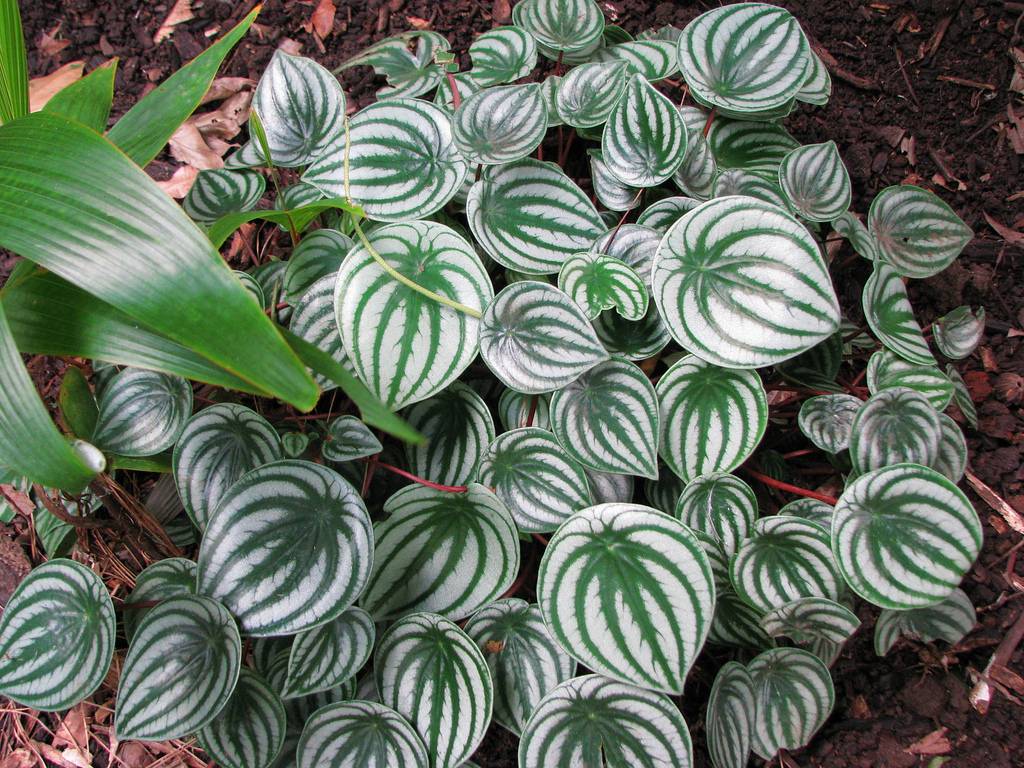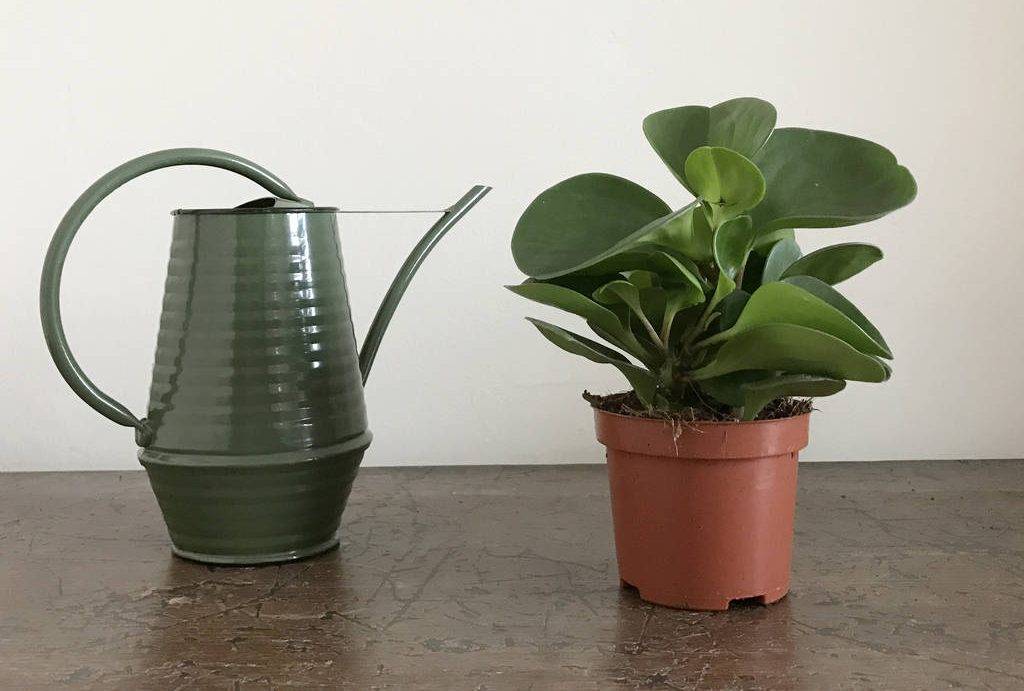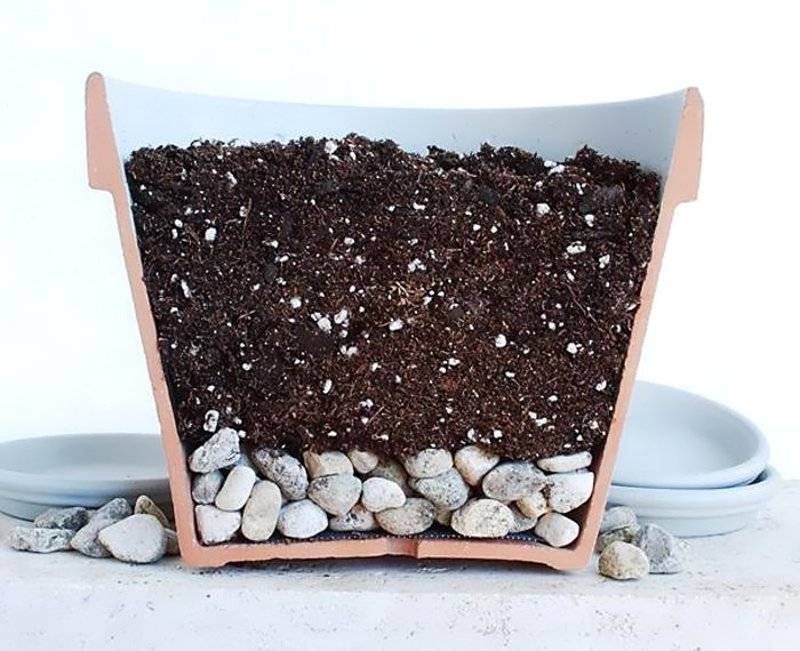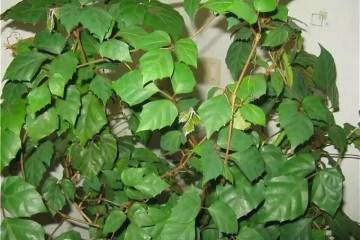Peperomia watermelon - home care
Content:
In garden plots, you can often find plants unusual for our country. One of them is watermelon peperomia. It has beautiful variegated leaves. When viewed from afar, it seems that the branches are dotted with miniature juicy fruits. It looks very attractive, but before starting a plant, it is necessary to study the description and features of caring for it.
Appearance and history of origin
Peperomia watermelon belongs to the pepper family. South America is considered its homeland, but peperomia is also found in India, as well as in Southeast Asia.
The most common cultivar in our gardens is Peperomia argyreia (Silver). It can be considered one of the most beautiful of the entire genus of these plants. The leaves of an unusual striped color, which give it a resemblance to a watermelon, especially attracts attention.
The name peperomia hides a huge number of various plants and shrubs that make up this family. The variety of their shapes and the unique features of each species attract the attention of gardeners.
Beneficial features
Speaking about useful properties, first of all, it should be noted the aesthetic attractiveness of plants. They are pleasing to the eye and uplifting.
In addition, peperomia helps:
- create a favorable aura in the home;
- remove negative influences and create a positive atmosphere.
All this has a beneficial effect on the health of the residents. For example, it is believed that watermelon peperomia has a beneficial effect on the digestive system, the condition of the biliary tract and mammary glands.
Common varieties
If we talk about all types of this family, its most striking representatives are:
- Dull-leaved. Perennial plants with straight, smooth stem and wide elliptical leaves. The dark green leaves accentuate the beauty of the small inflorescences that appear in the summer.
- Magnolia-leaved. According to external data, it looks like a dull-leaved variety, but its stems are more branched with a reddish tint.
- Lillian. A low-growing culture with inflorescences similar to lilies and juicy green leaves. At the end of flowering, small berries form on the peduncles.
- Clusielle. A southern perennial crop with large, reddish-green leaves. They have a characteristic purple border around the edges. Inflorescences are small and elongated.
- Shriveled up. Miniature variety (about 10 centimeters high). Leaves with brown veins, slightly convex in shape. Inflorescences are white, soaring high above the foliage.
- Round-leaved. They are compact in size and have smooth, heart-shaped leaves. The stem is reddish, and the inflorescences are small. This creeping plant at home will look like ampelous.
- Whorled. Also applies to ampel varieties. Unlike most types of peperomias, they bloom at the very beginning of summer.
- Rosso. A spectacular plant with beautiful leaves ranging in color from dark green to burgundy. Flowers appear on it rarely and are very small.
- Big-headed. They belong to the ampelous varieties and look great in hanging pots.They do not like direct sunlight.
- Silvery. They got their name because of the unusual color of the foliage. Small leaves have a light shade and dark streaks. This makes them look like watermelon.
- Climbing. Their shoots can reach one and a half meters, but at the same time they are completely undemanding to care for. The plant does not like the bright sun, and its leaves change color from beige to cream during the growth process. Beautiful green spots appear on them.
- Variegated. They are very popular with gardeners. The varigeous look is distinguished by the beauty of the leaves, which have bizarre variegated colors and various forms.
Features of home care
Each plant species has its own care requirements. But watermelon peperomia, home care for which does not differ with increased requirements, attracts lovers with its unpretentiousness.
Choice of location and lighting
Most types of peperomia prefer to grow on east or west windows. When placed on the south side, shading is required.
In winter, when there is a lack of natural light for normal growth, it is recommended to use fluorescent lamps. The minimum daylight hours should be more than eight hours.
Temperature
As for the temperature, its criteria are as follows:
- in the spring and summer months - 20-22 ° C;
- in autumn and winter - 18-22 ° C;
The ground temperature should be between 17 and 20 ° C.
Watering
Air humidity and watering are also of great importance for the normal development of peperomia. Since it is a tropical plant, watering should always be abundant, especially in spring and summer. The rest of the time, the amount of watering drops sharply. To do this, use settled water just above room temperature.
Spraying
If the air in the room is too dry, the leaves of the color will begin to wither. Therefore, in hot weather, leaf spraying is carried out for many indoor plants. However, Silver peperomia does not tolerate this procedure, so it is better to water it in a pan or place a container with water next to the pot so that the moisture evaporates and saturates the leaves.
Priming
The soil for planting a flower should be saturated with useful substances and not stick together into a single lump. For its compilation, humus, ordinary soil, earth, peat and sand are taken. All this in the same proportions. The pot should not be too large or deep enough.
Top dressing
It is necessary to fertilize flowers from early spring to late autumn. Complex mineral fertilizers are suitable for this. They are brought in according to the instructions on the package.
In winter, the culture does not require additional nutrition, feeding is carried out only during the period of active growth and flowering. In spring and summer, feeding is carried out twice a month.
When and how it blooms
On home windowsills, you can most often find compact plants with evergreen leaves or ampelous options. The gardens are planted with low, lush flowering shrubs. The flowering process begins in early summer.
The flowering of this exotic plant begins rapidly. In the evening, nothing is noticeable, and in the morning thin white stalks with edging at the ends rise above the silvery-green foliage. They are similar to plantains, but white, graceful and attractive. Moreover, when some flower stalks fade, then new ones bloom to replace them.
Pruning
As a rule, peperomia pruning is done for sanitary purposes.In addition, flower growers with certain skills know how to form aesthetically beautiful bushes by cutting off unnecessary parts of the branches. In some cases, the branches are too heavy and can break off under their weight, injuring the stem.
How the plant reproduces
Reproduction of such a beautiful color as peperomia is no less important for many gardeners than its cultivation. This can be done in the following ways:
- sprouting seeds;
- cutting cuttings;
- rooting leaves;
- dividing the bush.
The choice of method depends on the capabilities and experience of the grower. When grafting or dividing a bush, heat and moisture are needed, so it is better to do this in the spring. Rooting of leaves is possible at any time.
The cuttings to be cut should have several internodes. Rooting can be done in water or a sand and earth mixture. For more effective development of the root system, the planted cuttings are covered with polyethylene and watered every two days so that the ground is moist.
The room temperature must be at least + 25 ° C. A month later, when complete rooting occurs, young plants are planted in separate containers.
Transfer
Plant transplantation is done annually for the first time. After three years, you need to do this less often. It will be enough to renew the soil every two years. Moreover, the new capacity should be half the previous one.
A drainage layer must be laid down, and the soil is chosen loose and fertile.
Possible growing problems
Like most plants, peperomias are susceptible to disease and attacks from insects such as thrips and ticks.
To prevent diseases and damage by harmful bacteria, it is necessary to properly care for the plantings and regularly inspect their leaves in order to notice their damage as early as possible.
The following insects are dangerous for these plants:
- mealybug;
- shield;
- root fungus rot.
In addition, according to the state of the plant itself, you can understand that it is required to take measures to revive it:
- If the leaves begin to fall, then perhaps there is not enough moisture in the soil and the amount of watering should be increased.
- When a brown edging appears on the leaves, we can talk about a lack of heat in the room.
- Putrid foci signal an excess of moisture in the soil.
- Sluggish wrinkled leaves mean that there is not enough light in the room and you need to move the plant to another place or connect an artificial light source.
The variety of forms and exotic appearance of the representatives of the peperomia species make them popular with gardeners in our country. In addition, these attractive plants are unpretentious in maintenance and can be easily propagated at home.




















